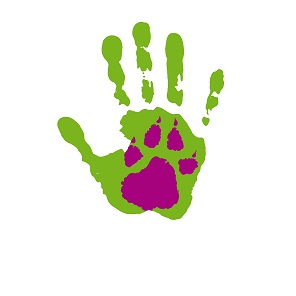Do Dogs Feel Emotions?
The brain activities, and how the nervous system response, are the same when any mammal feels stress or anxiety. When looking at the limbic system we are all the same (according to Panksepp et al) This is how researchers can draw conclusions about canine behaviour.
Greg Berns has proven that canines have the brain functions (caudate nucleus) necessary for feeling emotions. This brought around major changes in how we deal with training and basic behavior problems in dogs. Now, behavior modification and training are more about chemical responses in the brain and keeping the dog stress free, and less about programming the dog to obey without hesitation.
It also opens up some concerns that we previously dismissed in dog training. Some that I’ve dealt with include the realization that:
· Puppies can bully their owners to get their own way
· Puppies can throw temper tantrums
· Puppies can be taught to ‘over ride’ an instinctual behavior in favor of a conditioned response if that conditioned response is paired with a good emotion/feeling. (don’t bark and I will pay attention to you, or give you a treat.)
· Fearful dogs appear to be more aggressive than dominant dogs.
What Emotions Can Dog’s Feel?
People assume that dogs feel emotions in the same way that people feel emotions. This is not true. There are emotions/behaviors that dogs are incapable of. Most emotions that humans feel under the age of one are shared by cainines: Excitement/arousal, distress, contentment, disgust, fear, anger, joy, suspicious/shyness, affection.
Those the human develops over 2.5 years are not typically expressed by dogs: love, shame, pride, guilt, contempt, revenge/spite/unforgiveness, etc.
In the past we believed that dogs could be programmed. They accepted affection without feeling pleasure, attacked without feeling anger, were hurt without feeling pain/fear. Science has progressed a long way from the old ways of thinking.
Dogs undergo the same chemical changes that humans experience during emotional events. Dogs have oxytocin, which creates the feelings love and affection. However, it is important to not go overboard and immediately assume that the emotional ranges of dogs and humans are the same.
What is Missing in Canines? Complex Social Emotions
These are learned emotions and don’t appear until humans are older. Shame and pride take three years to appear, while guilt appears at four years, about the time a child feels contempt. This would include guilt.
So when your dog looks guilty, it is in fact showing ‘appeasmenet behavior.’ It is uncomfortable in the situation. It cannot understand your body language or tone of voice as you interrogate it. The dog is stressed and feeling fear. So it blinks, grins, turns its head, trying to communicate to you. Most people feel validated in their belief that their dog is guilty, so they continue. The dog is ignored. This continues. Then after a prolonged period of ‘learned helplessness’ the dog escalates to aggression. Humans are left feeling betrayed by their dog, angry, and even resentful.
What does that mean for you and your dog? It means that you need to step back and look at the world from the dog’s point of view. The dog has only one agenda, to be content/Safe, and happy. Everything else is an attempt to feel these emotions. Even if it means jumping through hoops, wearing a blinky collar, or watching television.
It also means that you can overcome a lot of behavior problems by correctly identifying stress and fear signals/behaviors. Then all you need to do is remove the ‘fear stimulus/trigger’. In a lot of cases, the dog will return to a state of calm, and the behavior improves.
References
Ian Dunbar
Patricial King
